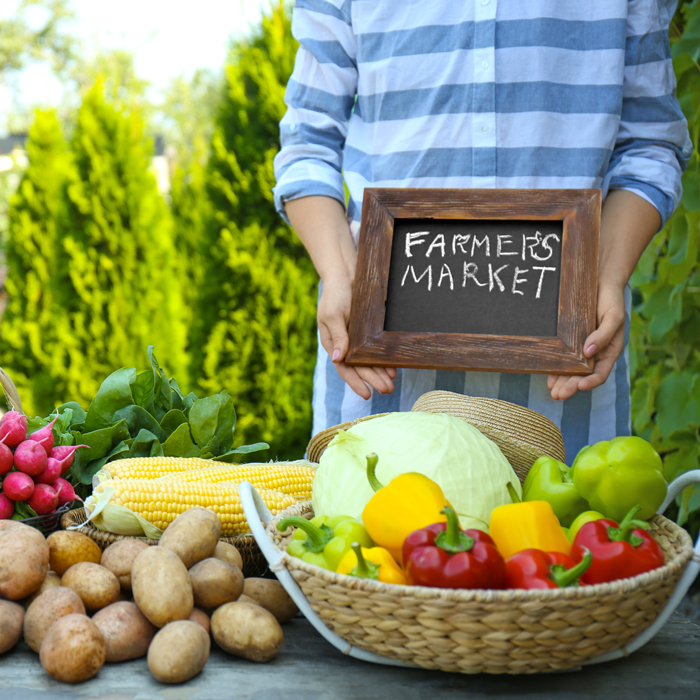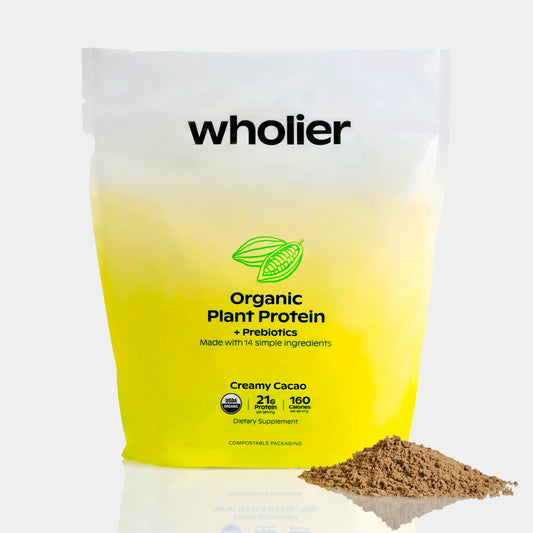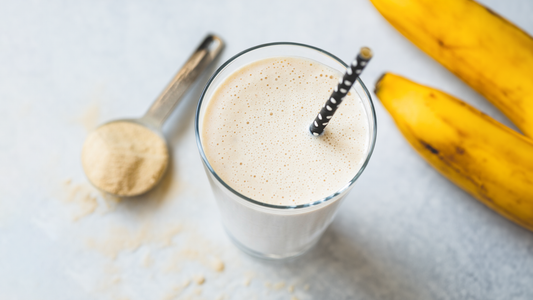
10 Tips for Eating a More Sustainable Diet
Eating a more sustainable diet is not only beneficial for our health but also for the environment. With the current climate crisis, it is important to make small changes in our daily lives to reduce our carbon footprint. But how can we eat a more sustainable diet? Here are some tips:
1. Eat a plant-based diet.
Did you know that animal agriculture is responsible for approximately 14.5% of global greenhouse gas emissions?(1) By reducing our consumption of animal products, we can significantly reduce our carbon footprint. In fact, one study found that a vegan diet can reduce an individual's carbon footprint by up to 73%.(3)
2. Choose seasonal and local produce.
When we buy out-of-season produce, it is often shipped from other countries, resulting in a significant carbon footprint. In fact, transporting food accounts for approximately 11% of global greenhouse gas emissions.(3) By choosing seasonal and local produce, we can reduce the amount of transportation required to get our food to our plates.
3. Reduce food waste.
Food waste is a significant issue that contributes to greenhouse gas emissions. In fact, if food waste were a country, it would be the third-largest emitter of greenhouse gases after the United States and China.(4) By reducing our food waste, we can reduce our carbon footprint and help mitigate the effects of climate change.
4. Choose sustainable packaging.
Did you know that in the United States, only 9% of plastic waste is recycled?(5) The rest ends up in landfills or the environment, contributing to pollution and waste. By choosing products with sustainable packaging, like compostable or recyclable materials, we can reduce our impact on the environment.
5. Reduce processed foods.
Processed foods require a significant amount of resources to produce and transport. In fact, the food industry accounts for approximately 30% of global greenhouse gas emissions.(6) By reducing our consumption of processed foods and focusing on whole, unprocessed foods, we can eat more sustainably and reduce our carbon footprint.
6. Support sustainable seafood.
Overfishing and unsustainable fishing practices can have negative impacts on marine ecosystems. In fact, it is estimated that 90% of global fish stocks are either fully or overfished.(7) By supporting sustainable seafood, like products that are certified by organizations like the Marine Stewardship Council or the Aquaculture Stewardship Council, we can help protect our oceans and promote sustainable fishing practices.
7. Reduce single-use plastics.
Single-use plastics, like straws, utensils, and plastic bags, contribute significantly to pollution and waste. In fact, it is estimated that by 2050, there will be more plastic in the ocean than fish, by weight.(8) By bringing our own reusable straws, utensils, and bags when eating out or shopping for groceries, we can reduce our use of single-use plastics and help protect the environment.
8. Consider food miles.
Transporting food requires energy and resources, leading to greenhouse gas emissions. In fact, it is estimated that the average American meal travels approximately 1,500 miles to get to our plates.(9) By choosing foods that are grown or produced closer to home, we can reduce our carbon footprint and support local agriculture.
9. Support regenerative agriculture.
Regenerative agriculture is a farming practice that aims to restore soil health, promote biodiversity, and sequester carbon. In fact, one study found that regenerative agriculture can sequester up to 40% of current annual carbon emissions.(10) By supporting regenerative agriculture and choosing products that are certified by organizations like Regenerative Organic Certification or the Savory Institute, we can help promote sustainable farming practices and reduce our carbon footprint.
10. Choose organic and non-GMO foods.
Choosing organic and non-GMO foods is another way to eat a more sustainable diet. Did you know that conventional farming practices can result in the loss of soil biodiversity and contribute to soil degradation? In fact, it is estimated that the world's soils have lost up to 60% of their original carbon content.(11) By choosing organic and non-GMO foods, we can support farming practices that promote soil health and reduce the use of harmful chemicals.
In addition to promoting soil health, choosing organic and non-GMO foods can also have positive impacts on our health. One study found that organic fruits and vegetables have higher levels of antioxidants and lower levels of pesticides compared to conventionally grown produce.(12) By choosing organic and non-GMO foods, we can reduce our exposure to harmful chemicals and promote a healthier food system for ourselves and the environment.
By adopting a plant-based diet, choosing seasonal and local produce, reducing food waste, choosing sustainable packaging, reducing processed foods, supporting sustainable seafood, reducing single-use plastics, considering food miles, and supporting regenerative agriculture, we can make small changes in our daily lives that have a positive impact on our health and the environment. It is important to educate ourselves on the impact of our food choices and make informed decisions when shopping for groceries and eating out. By making sustainable choices, we can reduce our carbon footprint and contribute to a healthier planet for future generations.
Sources:
(1) "Livestock and Climate Change." Worldwatch Institute. https://www.worldwatch.org/livestock-and-climate-change/.
(2) "The Vegan Calculator." The Vegan Society. https://www.vegansociety.com/go-vegan/how-go-vegan/vegan-calculator.
(3) "Food and Agriculture Organization of the United Nations." Global Agriculture Towards 2050. https://www.fao.org/fileadmin/templates/wsfs/docs/Issues_papers/HLEF2050_Global_Agriculture.pdf.
(4) "Food Waste: The Facts." World Wildlife Fund.
(5) "Plastic Pollution." Earth Day. https://www.earthday.org/earth-day-2021/#plastic-pollution.
(6) "The Food Industry Is Cooking the Planet." Vox. https://www.vox.com/2019/6/26/18716330/food-industry-cooking-planet-greenhouse-gas-emissions-climate-change.
(7) "Overfishing." World Wildlife Fund. https://www.worldwildlife.org/threats/overfishing
(8) "Plastic Pollution." National Geographic. https://www.nationalgeographic.com/environment/2018/07/ocean-plastic-pollution-solutions/.
(9) "Food Miles and the Relative Climate Impacts of Food Choices in the United States." Environmental Science & Technology. https://pubs.acs.org/doi/abs/10.1021/es702969f.
(10) "Regenerative Agriculture: A Solution to Climate Change." Rodale Institute. https://rodaleinstitute.org/wp-content/uploads/2018/09/Regenerative-Agriculture-and-Climate-Change-Fact-Sheet.pdf.
(11) "Soil Pollution: A Hidden Reality." United Nations Environment Programme. https://www.unenvironment.org/news-and-stories/story/soil-pollution-hidden-reality.
(12) "Are Organic Foods Safer or Healthier Than Conventional Alternatives?: A Systematic Review." Annals of Internal Medicine. https://www.ncbi.nlm.nih.gov/pmc/articles/PMC4003790






